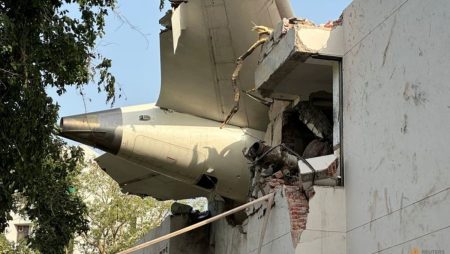On a seemingly ordinary Thursday morning, just before 11:30 a.m., the tranquility of a residential neighborhood in East Aurora, New York, was shattered by the sudden and tragic crash of a small private plane. The aircraft, identified as a 1979 Beechcraft A36, was en route from Lansing, Michigan, to White Plains, New York, when it encountered a fatal mechanical malfunction. The pilot, the sole occupant of the plane, lost their life in the crash, marking a somber day for the community and the aviation world.
The crash site, located near 100 Stewart Court, a property recently purchased in 2022 for $1.3 million, placed the incident in close proximity to the home of Buffalo Bills offensive lineman Dion Dawkins. While Dawkins was not residing at the property at the time of the crash, the event understandably shook him. Upon learning of the incident as he prepared for practice, Dawkins expressed his heartfelt concern for the pilot’s family, emphasizing the tragic loss of life and the importance of cherishing loved ones. He also expressed gratitude for the safety of his own family and the security measures in place that ensured their well-being.
The East Aurora plane crash serves as a stark reminder of the inherent risks associated with air travel, even in seemingly routine circumstances. While commercial aviation boasts a remarkable safety record, private aviation, with its diverse range of aircraft and operational complexities, presents unique challenges. Mechanical failures, while rare, can have catastrophic consequences, highlighting the crucial role of meticulous maintenance and adherence to safety protocols. The Beechcraft A36, the model involved in this incident, has a long history in general aviation, and understanding the specific mechanical issue that led to this crash will be a critical focus of the ongoing investigation.
The investigation into the crash is being spearheaded by local authorities, with support from federal agencies like the National Transportation Safety Board (NTSB) and the Federal Aviation Administration (FAA). These agencies bring their specialized expertise in aircraft accident investigation to the scene, meticulously examining the wreckage, analyzing flight data, and interviewing witnesses to piece together the sequence of events leading to the tragedy. The NTSB, in its role as the lead investigative body, will meticulously document the findings, analyze the contributing factors, and ultimately issue a final report outlining the probable cause of the crash. This process can be lengthy and complex, often taking months or even years to complete, but it is crucial for enhancing aviation safety and preventing similar accidents in the future.
The impact of this tragic event extends beyond the immediate vicinity of the crash site, resonating within the community of East Aurora and the broader aviation community. For residents of the quiet neighborhood, the sudden intrusion of a plane crash into their daily lives serves as a stark reminder of the fragility of life and the unexpected nature of tragedy. For the aviation community, the incident underscores the ongoing need for vigilance and continuous improvement in safety protocols. The loss of a fellow pilot serves as a somber call to action, reminding all involved in aviation of their shared responsibility to maintain the highest standards of safety.
The story of the East Aurora plane crash is one of sudden loss, community resilience, and the pursuit of answers. As investigators continue their meticulous work, the community mourns the loss of the pilot and reflects on the value of safety and preparedness. The incident serves as a reminder that even amidst the routines of daily life, unforeseen events can occur, and the importance of cherishing loved ones and supporting those affected by tragedy cannot be overstated. The final report from the NTSB will ultimately provide a clearer understanding of the events that led to this devastating crash and, hopefully, contribute to preventing similar tragedies in the future.










